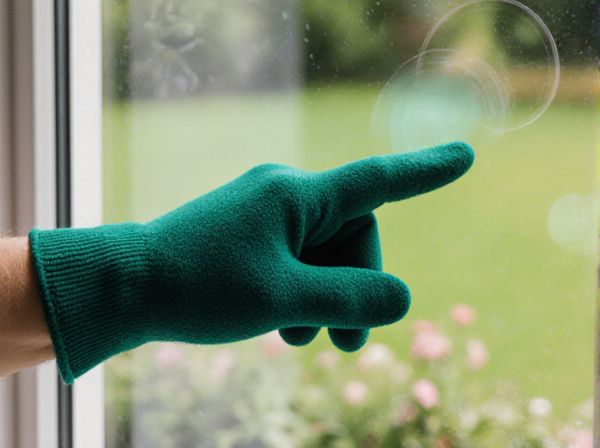
Double Glazing vs Single Glazing Illustration
Double glazing in greenhouses offers superior insulation compared to single glazing, reducing heat loss and maintaining a more stable internal temperature. This leads to better energy efficiency and promotes optimal plant growth by protecting against temperature fluctuations. Single glazing, while cheaper, provides less thermal protection and is more prone to condensation and heat loss.
Table of Comparison
| Feature | Double Glazing | Single Glazing |
|---|---|---|
| Thermal Insulation | High - reduces heat loss and improves temperature control | Low - offers minimal heat retention |
| Energy Efficiency | Excellent - reduces heating costs | Poor - higher energy consumption |
| Condensation Prevention | Effective - limits moisture buildup inside the greenhouse | Limited - prone to condensation and mold growth |
| Sound Insulation | Good - reduces external noise | Poor - minimal noise reduction |
| Durability | Higher - resistant to damage and weather changes | Lower - prone to cracks and damage |
| Cost | Higher initial investment | Lower upfront cost |
| Overall Performance | Superior - optimized growing conditions and energy savings | Basic - less efficient and less durable |
Introduction to Greenhouse Glazing Options
Greenhouse glazing options primarily include single glazing and double glazing, each impacting insulation and light transmission differently. Single glazing typically uses one layer of glass or plastic, offering basic protection but lower thermal efficiency. Double glazing consists of two glass layers separated by an air or gas-filled space, significantly improving heat retention and energy efficiency for optimal plant growth.
What is Single Glazing in Greenhouses?
Single glazing in greenhouses refers to the use of a single pane of glass or transparent material as the covering, allowing sunlight to enter while providing basic protection from external elements. This type of glazing offers less insulation compared to double glazing, resulting in higher heat loss and reduced energy efficiency. Single glazing is more affordable but may lead to greater temperature fluctuations, impacting plant growth and greenhouse climate control.
Understanding Double Glazing for Greenhouses
Double glazing for greenhouses involves two panes of glass separated by a sealed air space, significantly enhancing thermal insulation compared to single glazing. This design reduces heat loss, maintains a stable internal temperature, and improves energy efficiency, which is crucial for optimal plant growth. The insulating properties of double-glazed panels minimize condensation and protect plants from extreme temperature fluctuations, promoting healthier greenhouse environments.
Thermal Efficiency: Double vs Single Glazing
Double glazing significantly improves thermal efficiency in greenhouses by trapping a layer of insulating air between two glass panes, reducing heat loss compared to single glazing. Single glazing allows more heat to escape, resulting in higher energy consumption for maintaining optimal growing temperatures. The enhanced insulation of double glazing minimizes condensation and stabilizes internal temperatures, promoting healthier plant growth and energy savings.
Energy Cost Savings Comparison
Double glazing in greenhouses significantly reduces heat loss compared to single glazing, resulting in energy cost savings of up to 40%. The insulated air or gas layer between the two panes minimizes thermal transfer, maintaining a stable internal temperature and lowering heating requirements. Consequently, growers experience reduced fuel consumption and lower utility bills during colder months.
Light Transmission Differences
Double glazing in greenhouses offers reduced light transmission compared to single glazing, typically allowing around 70-80% of sunlight to pass through, whereas single glazing can transmit up to 90% or more. The additional glass layer and air gap in double glazing create insulating properties but slightly diffuse light, impacting the intensity and quality reaching plants. Selecting the appropriate glazing depends on balancing light requirements with thermal insulation needs to optimize greenhouse plant growth.
Durability and Maintenance of Glazing Types
Double glazing offers superior durability compared to single glazing due to its two layers of glass separated by a sealed air gap, which reduces the risk of condensation and improves resistance to cracking and warping. Maintenance requirements for double-glazed panels are generally lower since the sealed unit protects the internal space from dirt and moisture, preventing damage and preserving insulating properties over time. Single glazing, being a single glass pane, requires more frequent cleaning and is more susceptible to damage from temperature fluctuations and physical impact, leading to higher long-term maintenance costs.
Impact on Plant Growth and Health
Double glazing in greenhouses significantly improves thermal insulation, maintaining a more stable internal temperature that promotes consistent plant growth and reduces stress from temperature fluctuations. Single glazing, while allowing more immediate light transmission, often results in greater heat loss during cold periods, potentially stunting growth and increasing the risk of plant disease due to temperature stress. Optimal plant health in double-glazed greenhouses benefits from enhanced humidity control and protection from external weather, fostering a more controlled environment for photosynthesis and nutrient absorption.
Upfront Investment and Long-term Value
Double glazing requires a higher upfront investment compared to single glazing due to its enhanced insulating materials and construction complexity. Over time, double glazing offers superior energy efficiency, reducing heating and cooling costs significantly, which leads to substantial long-term savings. The increased durability and performance of double glazing also enhance the greenhouse's lifespan and contribute to better plant growth conditions, making it a cost-effective choice in the long run.
Choosing the Right Glazing for Your Greenhouse
Double glazing offers superior insulation by trapping heat between two panes of glass, maintaining a stable climate essential for plant growth. Single glazing, while more affordable, provides less thermal efficiency and may lead to greater heat loss during cooler months. Selecting the right glazing depends on balancing energy costs, climate conditions, and the specific needs of plants within your greenhouse.
Double Glazing vs Single Glazing Infographic

 gardendif.com
gardendif.com